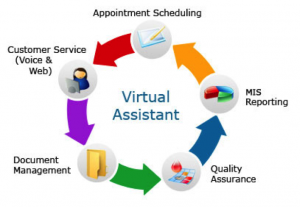Today is the most important day for your business. Why? What you achieve today impacts what you can accomplish tomorrow, next month, five years from now. In our fast-paced business world, it’s easy for our days to blur together. Too often we cultivate bad daily habits without even realizing it. But these little bad habits add up to impactful shifts in our success down the road.
Many of us are guilty of the following daily mistakes of small business owners. Taking the time to identify, and then correct, these mistakes helps empower you to achieve your full potential. And what business owner doesn’t want that?
- Not Prioritizing Your Own Health
Notice I didn’t say “value your own health” or “take care of your own health.” You need to prioritize your health because it is the best way to prioritize your business!
 Your body is remarkably like a machine. Optimal performance requires quality fuel, proper maintenance, and adequate rest. Skimp out on one of these areas and the performance suffers.
Your body is remarkably like a machine. Optimal performance requires quality fuel, proper maintenance, and adequate rest. Skimp out on one of these areas and the performance suffers.
Many of us buy into this workaholic American mentality. You slaved away at the office for 60 hours this week? Gold star for you! You worked through lunch? Gold star for you! You stayed up all night working on a presentation and gulped down four coffees to make it through the day? Gold star for you!
Stop it with these gold stars. The best entrepreneurs know your health should be a bigger priority than your business. Taking care of your health leads to being more effective and efficient as you work, maintaining better work-life balance, and being all around happier. Think of it as the ultimate productivity hack. Hit the gym, bring healthy lunches to work, and turn off the screens an hour before bed. A few weeks of healthy habits and you’ll be amazed at your increased work output.
- Not Posting to Social Media Daily
Social media for businesses is not a spectator sport. Either you are all in. Or you don’t enter the game at all.
Granted, all in does not need to mean several hours a day online or a disproportionate chunk of your marketing budget. But posting to Facebook once a week and never keeping up with the always changing marketing trends is not going to cut it.
Take some time to choose the best one to three platforms for your business (more if you are a large business with more marketing resources). Dedicate the necessary time to get these platforms thriving. While most businesses opt for the traditional Facebook and Twitter platforms, consider alternatives like Google+ and Facebook and LinkedIn Groups. These offer unique marketing benefits most marketers fail to take advantage of.
- Failing to Organize
Is your desktop scattered with documents and folders? Is your desk overrun with papers and packets? Does it take you more than 15 seconds to locate any given document?
 It’s time for improved organization. To many entrepreneurs, organization can seem like a luxury. Who has time to look for (and then implement) the best organizational system? But the longer you go without one, the more time you waste searching for that one filed buried under desktop folder after desktop folder.
It’s time for improved organization. To many entrepreneurs, organization can seem like a luxury. Who has time to look for (and then implement) the best organizational system? But the longer you go without one, the more time you waste searching for that one filed buried under desktop folder after desktop folder.
Take some time to actually implement a thorough organizational system. Then be sure to stick to it every day. Always put digital or physical files in their correct location with the correct labeling. Deal with any papers dropped on your desk right away. Don’t save to your desk drive or let stacks pile up on your desk. Every day be sure to keep things organized.
- Starting the Day With an Email Check
This can be one of THE hardest bad habits to break. We are all guilty of logging onto our computer and going right for the email.
But nearly every business productivity expert gives the same advice: don’t!
When we start with an email check, it puts our brain in reactive mode rather than a proactive or creative mode. When we arrive to work, we are often at a peak mental state (assuming we didn’t suffer from a horrid commute and got our cup of Joe). This precious optimal mental state should be used tackling the hardest projects of the day, not scanning through emails.
It’s best to get a project or two done before checking your email. As a business owner, you often are bombarded with questions and comments from clients and employees. Set aside dedicated time to check your email, say at 11am, 2pm, and 4pm to deal with these emails. This allows you to really focus on your work and use email as a slight brain break during your natural energy dips.
- Not Taking Breaks
 This is another difficult mistake to stop engaging in. It’s all too easy to sit down at your desk in the morning…and never get up again. We falsely believe the best way to maximize our work is to maximize our hours working. In reality, our brains are much more efficient when we take breaks. Even just a few minutes every hour getting up and stretching can help your brain feel refreshed and ready to tackle whatever problem awaits you.
This is another difficult mistake to stop engaging in. It’s all too easy to sit down at your desk in the morning…and never get up again. We falsely believe the best way to maximize our work is to maximize our hours working. In reality, our brains are much more efficient when we take breaks. Even just a few minutes every hour getting up and stretching can help your brain feel refreshed and ready to tackle whatever problem awaits you.
Try this Navy SEAL trick. Every hour, set an alarm on your phone for a SLLS break: stop, look around your surroundings, listen and try to name as many sounds as you can, and smell and try to name as many smells as you can. Soldiers use this when they are trudging through the worst environment possible for days on end. You can use it when you need a break from the hours staring at a computer.
- Failing to Look Long Term
In the daily hustle and bustle of work, it’s easy to get a narrow focus. There are so many tasks needing to be done now. But each day, you need to be preparing for the future. Spend time working on moving your business forward a few months from now. Send your current clients a little gift to strengthen that relationship. Attend a networking event or conference to build up your prospective client list. Take an online class to hone your skills. Try out new tools. Do something daily to prepare for the future. When the future comes, you’ll be ahead of your competition.
- Not Delegating or Outsourcing
This is a mantra all small business owners need to hear. Just because you can does not mean you should.
 All too often we take on tasks that can and should be handled by someone else. We do this for many reasons. Maybe our team is so small we feel guilty passing along the task. Maybe we struggle with relinquishing control over our passion project. Maybe we worry it’ll take more time managing the employee than just doing it ourselves.
All too often we take on tasks that can and should be handled by someone else. We do this for many reasons. Maybe our team is so small we feel guilty passing along the task. Maybe we struggle with relinquishing control over our passion project. Maybe we worry it’ll take more time managing the employee than just doing it ourselves.
The reality is delegating is a powerful tool to maximize your business. Every small business owner should be delegating in some regard. You can delegate to your own employee or rely on the strength of a virtual assistant. Whatever approach you take, you can free up your valuable time to projects more pressing for your attention. It’s painful letting go, but you will be so glad you did!




 deadline or taking a bit more time to submit a quality project, which do they choose? Is the underlying goal of the
deadline or taking a bit more time to submit a quality project, which do they choose? Is the underlying goal of the  ready for greater responsibility. But, if they genuinely do not feel ready it may be a bad experience for them. Try to build up their confidence and remind them that you feel they are ready. If that fails and they still are uncomfortable at the thought of the project, find a new employee. It is not worth the
ready for greater responsibility. But, if they genuinely do not feel ready it may be a bad experience for them. Try to build up their confidence and remind them that you feel they are ready. If that fails and they still are uncomfortable at the thought of the project, find a new employee. It is not worth the  deadline, be cautious about underestimating the length of time the project will take. It may only take you a week, but your employee may need to do outside research adding a day or two. Or maybe your employee hits some unexpected roadblocks, requiring you to take the time to provide guidance or assistance. Always estimate more time to provide a buffer in case things don’t go as smoothly as planned.
deadline, be cautious about underestimating the length of time the project will take. It may only take you a week, but your employee may need to do outside research adding a day or two. Or maybe your employee hits some unexpected roadblocks, requiring you to take the time to provide guidance or assistance. Always estimate more time to provide a buffer in case things don’t go as smoothly as planned. delegation to avoid doing unpleasant tasks. Good leadership means being willing to do the menial, the unappealing, and aggravating tasks for the good of the business.
delegation to avoid doing unpleasant tasks. Good leadership means being willing to do the menial, the unappealing, and aggravating tasks for the good of the business. 
 about work at 5. When there is no firm end to the work day, it’s so much harder to transition from “work mode” to “living your life mode.” You feel guilty watching TV and wonder if you should go get that one article done. You daydream thinking of your to-do list. You always feel “on,” making it difficult to give yourself the
about work at 5. When there is no firm end to the work day, it’s so much harder to transition from “work mode” to “living your life mode.” You feel guilty watching TV and wonder if you should go get that one article done. You daydream thinking of your to-do list. You always feel “on,” making it difficult to give yourself the  Here is where you get to enjoy the freedom of being your own boss. Maybe your peak creativity hours are early morning and early evening. In the middle of the day, you suffer from the afternoon slump. So work in the peak hours and go workout or run errands when your brain power dips.
Here is where you get to enjoy the freedom of being your own boss. Maybe your peak creativity hours are early morning and early evening. In the middle of the day, you suffer from the afternoon slump. So work in the peak hours and go workout or run errands when your brain power dips. Once you create a schedule, protect it fiercely. Don’t check your email outside of work hours. Let your clients know what hours they can expect to reach you by phone…and don’t pick up if it’s outside of those (or work into your contract it’s a $75 fee every time they do). When you are done for the day, be done. Don’t fall into the trap of well I could get one more thing done. Allow yourself to rest and relax!
Once you create a schedule, protect it fiercely. Don’t check your email outside of work hours. Let your clients know what hours they can expect to reach you by phone…and don’t pick up if it’s outside of those (or work into your contract it’s a $75 fee every time they do). When you are done for the day, be done. Don’t fall into the trap of well I could get one more thing done. Allow yourself to rest and relax!
 Your body is remarkably like a machine. Optimal performance requires quality fuel, proper maintenance, and adequate rest. Skimp out on one of these areas and the performance suffers.
Your body is remarkably like a machine. Optimal performance requires quality fuel, proper maintenance, and adequate rest. Skimp out on one of these areas and the performance suffers. It’s time for improved organization. To many entrepreneurs, organization can seem like a luxury. Who has time to look for (and then implement) the best organizational system? But the longer you go without one, the more time you waste searching for that one filed buried under desktop folder after desktop folder.
It’s time for improved organization. To many entrepreneurs, organization can seem like a luxury. Who has time to look for (and then implement) the best organizational system? But the longer you go without one, the more time you waste searching for that one filed buried under desktop folder after desktop folder. This is another difficult mistake to stop engaging in. It’s all too easy to sit down at your desk in the morning…and never get up again. We falsely believe the best way to maximize our work is to maximize our hours working. In reality, our brains are much more efficient when we take breaks. Even just a few minutes every hour getting up and stretching can help your brain feel refreshed and ready to tackle whatever problem awaits you.
This is another difficult mistake to stop engaging in. It’s all too easy to sit down at your desk in the morning…and never get up again. We falsely believe the best way to maximize our work is to maximize our hours working. In reality, our brains are much more efficient when we take breaks. Even just a few minutes every hour getting up and stretching can help your brain feel refreshed and ready to tackle whatever problem awaits you. All too often we take on tasks that can and should be handled by someone else. We do this for many reasons. Maybe our team is so small we feel guilty passing along the task. Maybe we struggle with relinquishing control over our passion project. Maybe we worry it’ll take more time managing the employee than just doing it ourselves.
All too often we take on tasks that can and should be handled by someone else. We do this for many reasons. Maybe our team is so small we feel guilty passing along the task. Maybe we struggle with relinquishing control over our passion project. Maybe we worry it’ll take more time managing the employee than just doing it ourselves.






 So, lets get to the nitty gritty and the real reason you have landed on this blog. My first guess why you are here is because you are a small business owner, entrprenuer, soloprenuer, momprenuer or a “preneuer” of some kind and are looking for ways to get everything done and still maintain a healthy work/life balance. You also have likely heard somewhere along the way that if you are in business for yourself you really should look at partnering and aligning yourself with a top-notch Virtual Assistant. Because there is no way you can do it all on your own, stay sane, continue to love what you do and most importantly still be profitable. You know what? Whoever they are, they were right, you can’t do it all on your own.
So, lets get to the nitty gritty and the real reason you have landed on this blog. My first guess why you are here is because you are a small business owner, entrprenuer, soloprenuer, momprenuer or a “preneuer” of some kind and are looking for ways to get everything done and still maintain a healthy work/life balance. You also have likely heard somewhere along the way that if you are in business for yourself you really should look at partnering and aligning yourself with a top-notch Virtual Assistant. Because there is no way you can do it all on your own, stay sane, continue to love what you do and most importantly still be profitable. You know what? Whoever they are, they were right, you can’t do it all on your own.

 A soft launch is a marketing effort that intentionally limits its scope to a smaller percentage of the target audience. The goal is to test the product among the small audience and tweak it as necessary before the product is available to everyone. The audience can be a small group within your target audience or a small group whose demographics are similar to your target audience (such as product testing in Canada, New Zealand, or Australia).
A soft launch is a marketing effort that intentionally limits its scope to a smaller percentage of the target audience. The goal is to test the product among the small audience and tweak it as necessary before the product is available to everyone. The audience can be a small group within your target audience or a small group whose demographics are similar to your target audience (such as product testing in Canada, New Zealand, or Australia). it’s released to everyone. Staff members can really focus on finding changes that need to be made because they won’t be spending as much time focused on various marketing efforts. This is really still a testing phase. It allows you to work out some of the kinks before you go big!
it’s released to everyone. Staff members can really focus on finding changes that need to be made because they won’t be spending as much time focused on various marketing efforts. This is really still a testing phase. It allows you to work out some of the kinks before you go big! An effective campaign for a hard launch, in contrast, could take several weeks or even months. On the flip side, the amount of time it takes to see results comes in much quicker with a hard launch due to the expanded marketing efforts. Of course, in the long run, a soft launch does take longer because it’s followed by a hard launch. But when comparing a soft launch to a hard launch, a soft launch is much shorter.
An effective campaign for a hard launch, in contrast, could take several weeks or even months. On the flip side, the amount of time it takes to see results comes in much quicker with a hard launch due to the expanded marketing efforts. Of course, in the long run, a soft launch does take longer because it’s followed by a hard launch. But when comparing a soft launch to a hard launch, a soft launch is much shorter. Different marketing needs will call for different strategies. For newer products, you will likely want to do a soft launch. This will allow you to gather valuable information on your target audience to better tailor the marketing efforts when you introduce the product. For products you are less confident in, a soft launch also works well. You’ll gain confidence after seeing how the product performed in the smaller audience and know you made the changes needed for it to be ready for a full audience launch. For a product that will be launched in a more competitive market, a hard launch will be better since it allows for a wide marketing effort.
Different marketing needs will call for different strategies. For newer products, you will likely want to do a soft launch. This will allow you to gather valuable information on your target audience to better tailor the marketing efforts when you introduce the product. For products you are less confident in, a soft launch also works well. You’ll gain confidence after seeing how the product performed in the smaller audience and know you made the changes needed for it to be ready for a full audience launch. For a product that will be launched in a more competitive market, a hard launch will be better since it allows for a wide marketing effort.
 Ensure your website is mobile friendly. Busy shoppers purchase on their phone. A difficult to use app will lose you customers faster than people lose their diet resolutions at the company holiday party. Plug your url into
Ensure your website is mobile friendly. Busy shoppers purchase on their phone. A difficult to use app will lose you customers faster than people lose their diet resolutions at the company holiday party. Plug your url into  Pick a season’s greetings. Some audiences are offended with the use of “Merry Christmas” while others are equally offended by the lack of “Merry Christmas.” Know which greetings best suit your brand and your target audience. “Happy Holidays” is a safe bet since it recognizes the numerous celebrations.
Pick a season’s greetings. Some audiences are offended with the use of “Merry Christmas” while others are equally offended by the lack of “Merry Christmas.” Know which greetings best suit your brand and your target audience. “Happy Holidays” is a safe bet since it recognizes the numerous celebrations. Santa. An art supply store can organize a holiday card decorating workshop. Any store can throw a holiday party with a tree lighting and carol singing. Make a fun event, ideally connected to your business, to draw people to your store. They’ll be reminded of your great selection, which hopefully will get them thinking about crossing items off their shopping list with your products.
Santa. An art supply store can organize a holiday card decorating workshop. Any store can throw a holiday party with a tree lighting and carol singing. Make a fun event, ideally connected to your business, to draw people to your store. They’ll be reminded of your great selection, which hopefully will get them thinking about crossing items off their shopping list with your products.